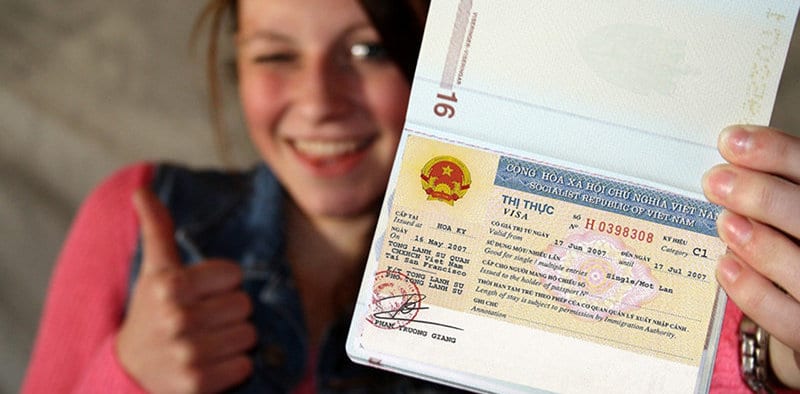Visas in Vietnam change regularly, which is confusing to many of us when we want to visit Vietnam for a particular purpose. Especially during the this post-pandemic period, many are still wondering whether there has been an adjustment in the visa policy. The good news is that there are only a few, which doesn’t affect your upcoming plan to Vietnam, or at least for now.
The guide I’m giving you is 100% based on governmental instructions. I hope you will be able to gather the right piece of information for your upcoming trip to Vietnam after reading my guide.
How to get a visa in Vietnam?
A foreigner entering Vietnam must apply for a visa either at the embassy or via an online site of the government. (link: https://evisa.xuatnhapcanh.gov.vn/en_US/web/guest/khai-thi-thuc-dien-tu/cap-thi-thuc-dien-tu)

(A foreigner under visa exemption doesn’t need a visa to enter the country)
The most common way to apply for a visa to Vietnam is to apply for an E-visa (or EV) through the governmental website because it’s easy to do. You can complete the whole process from anywhere you want.
To apply for the EV to Vietnam you need to follow the steps below:
- Prepare the documents required:
- A 4x6cm passport photo in JPG format (the background of the photo must be clear; The photo must show the whole face; Hat and glasses are not allowed in the photo)
- A photo of the passport data page (In JPG format)
- Passport must still be valid for at least six months.
- A submission of your temporary address in Vietnam, the entry and exit points
- Payment information: Debit or credit card
- Access the link
- Pay your EV fee of 25 US dollars and copy the registration code provided
- Within three days, an email will appear in your mailbox to inform you of any relevant information about your EV submission. Another way to check the application status is to use the registration code provided
- Download and print out the EV. Make sure to make at least two copies in case of emergency.
Another type of visa is visa on arrival (or VOA). If you live far away from the embassy or you have to take an urgent flight, you can apply for a VOA at the airport on your arrival day.
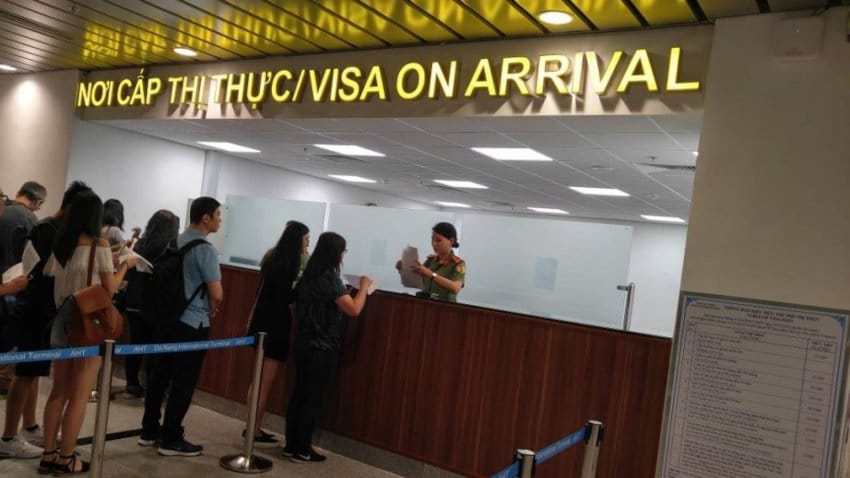
To apply for a VOA, you will need:
- Access to the link to apply.
- An email will appear in your mailbox to confirm your registration. It is an approval letter. Remember to print it out once you receive it.
- Prepare these documents before you arrive at the airport: The Vietnamese Visa Application Form, the Approval Letter, two 4x6cm photos, your passport, and cash to pay the stamping fee.
- Submit the documents to the counter staff at the airport to have the visa stamped on your passport
Note: This is an alternative way if you cannot visit the embassy. However, there is a slight difference between a VOA and a visa provided at the embassy. With a VOA, the Vietnam Immigration Department will send you a Visa Approval Letter, with your name on it, stating that you are allowed to enter Vietnam on the given date. After that, you will have a visa stamped onto your passport once you arrive at the airport in Vietnam. However, with the visa applied at the embassy, the visa stamp will appear on your passport when they send it back to you.
❓ Frequently asked questions: visa-related questions in 2022 ?
👉 What is a visa approval letter?
A Visa Approval Letter (or VAL for short) is a permission form that allows visitors to enter Vietnam and get their visa stamped onto the passport upon the arrival date at Vietnam airport.
How long does it take me to receive my visa approval letter?
You will receive the VAL after two working days if you apply for a tourist visa. For a business visa, it normally takes around 5 – 7 working days. You will receive the VAL via email. (Saturday, Sunday, and holidays don’t count). Time zones affect the process so make sure you check the time in Vietnam for the most accurate update.
In case of emergency, you will receive the VAL within the time frame below:
Same-day processing: If you submit your visa application form and pay the service fee before 12:00 PM (Vietnam time) on whatever working day between Monday and Friday, you will receive your VAL by 18:00 on the same working day.
Next-day processing: If you submit your visa application form and pay the service fee after 12:00 PM (Vietnam time) on whatever working day between Monday and Friday, you will receive your VAL by 18:00 on the next working day.
👉 How do I receive my visa approval letter?
The only way to receive your VAL is via email. The letter is available in PDF format. Both visas are applicable for everyone. Make sure you evaluate which of the two above suits your demand best.
👉 How much do I need to pay for the visa approval letter?
You have to pay 2 kinds of fees when you use a visa on arrival to travel to Vietnam.
- Service fee: This is the fee that you pay to Vietnam-visa.com for handling all the procedures with the Vietnam Immigration Department for the visa approval letter. The fee varies depending on the number of applicants and the type of service that you use (normal, urgent, or super-urgent processing).
- Stamping fee: This is the fee you pay to get your visa stamped on the passport once you arrive at the Vietnam airport. Stamping fees are available in almost every currency. However, USD is recommended to avoid an unbalanced exchange rate.
- 1 – 3 month single entry visa: 25 USD
- Up to 3-month multiple entry visa: 50 USD
- Up to 6-month multiple entry visa: 95 USD
- Up to 1-year multiple entry visas: 135 USD
👉 What are the airports in Vietnam that issue visas on arrival?
- Tan Son Nhat international airport (Ho Chi Minh City)
- Noi Bai international airport (Hanoi)
- Cat Bi international airport (Hai Phong)
- Da Nang international airport (Da Nang)
- Lien Khuong international airport (Da Lat)
- Cam Ranh international airport (Khanh Hoa)
- Phu Quoc international airport (Phu Quoc)
- Can Tho international airport (Can Tho)
👉 What are the most common visa types in Vietnam?
There are five common visa types:
- Tourist visa (DL)
- Work visa (LD1 – LD2)
- Investor visa (DT1, DT2, DT3, DT4)
- Business visa (DN1, DN2)
- Student/internship visa (DH)
👉 What are the countries that can come to Vietnam under visa exemption?
There are 13 countries that can visit Vietnam under visa exemption:
| Country |
|---|
| Belarus |
| Denmark |
| Finland |
| France |
| Germany |
| Italy |
| Japan |
| Norway |
| Russia |
| South Korea |
| Spain |
| Sweden |
| The U.K |
Basic information of the 5 common visa types
Tourist visa (DL)
Tourist visas are solely issued to foreigners who come to Vietnam for touristic purposes.
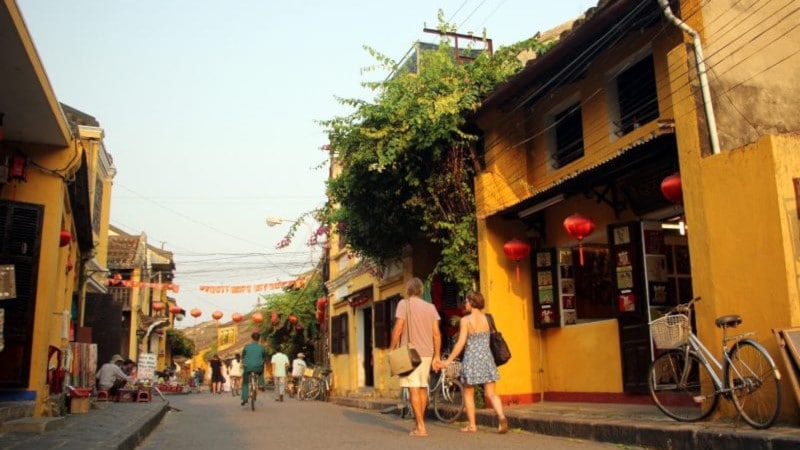
There are four categories of tourist visas in Vietnam depending on the stay length and number of entries:
- One-time entry visa/month
- Multiple-time entry visa/month
- One-time entry visa/3 months
- Multiple-time entry visa/3 months
In addition, American citizens when visiting Vietnam for the touristic purpose have an additional option: Multiple-time entry visa/year
According to the new immigration law, if the tourist visa has more than 30 days of expiration, a 30-day temporary residence card is provided and can be considered for extension.
There are three ways to apply for a tourist visa to Vietnam:
- Apply for a Visa On Arrival (or VOA): This is the most optimal way to apply for a visa for a foreigner to travel to Vietnam by the airway
- Apply for a visa at the Vietnamese embassy
- Apply for an E-visa (or EV): This could only apply for the one-time entry visa/month and the citizens from the 80-country group.
To apply for a tourist visa, there are a few documents required:
- A passport of at least 6-month validity (Temporary Passport might not be acceptable)
- Two blank pages for the visa stamp on the passport
- Two 4x6cm photos
Work visa (LD1 – LD2)
Work visa is granted for foreigners who come to Vietnam to work.

Work visa divides into two categories:
- LD1: Provided to foreigners who come to Vietnam to work under a work permit exemption certificate, unless otherwise firmly stated by the International Treaties to which Vietnam is a member
- LD2: Provided to foreigners who own a work permit in Vietnam
To apply for a work visa, there are two important steps to follow:
- You must ask the company that you work for in Vietnam to help you apply for an LD visa approval letter at the Vietnam Immigration Service.
- You will go to the Vietnamese embassy in your country or the Vietnam airport to have your visa stamped on the passport.
Note: The most crucial document that approves your working status in Vietnam is the Work Permit or the approval document of work permit exemption. If you want to apply for a work visa, but you don’t have a work permit or the approval document of work permit exemption, you should apply for a commercial visa. The company that helps you apply for a commercial visa is the one that you will work for in Vietnam. After that, once you receive the work permit, you will be able to apply for a work visa.
In most cases, you don’t have to submit any legal record and health check when applying for a work visa in Vietnam.
You must pay two basic fees when applying for a work visa in Vietnam: the LD visa approval letter and the stamp fee.
Investor visa (DT1, DT2, DT3, DT4)
An investor visa is issued to foreigners who come to Vietnam to work as international investors.
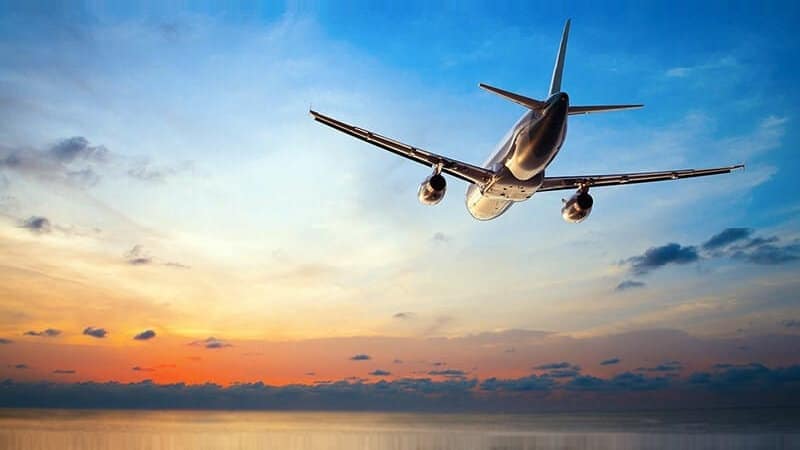
Foreigners must prepare all the documents below before coming to Vietnam:
- A passport
- An NA5 form – which includes visa application, stay extension, and visa extension for foreigners in Vietnam.
- A form to register for a temporary residence card.
- An invitation letter from the sponsoring company
- A legal status defined by Vietnamese law that proves you’re an investor.
- A certified duplicate of your Business Registration Certificate/Investment Registration Certificate
- A stamp specimen registration certificate or an official update of the stamp specimen of your enterprise on the national enterprise registration portal
- Form NA16 – which includes a registration form of the seal and a signature that shows the legal representative of the enterprise operating in Vietnam
- Lawyer license (If you’re a lawyer)
Business visa
There are two categories for business visas:
- DN1 visa is granted to foreigners who work with businesses with a legal status approved by the Vietnamese law
- DN2 visa is granted to individual foreigners that enter Vietnam for service promotion, commercial presence establishment, or conducting any other activities regarding the international treaties to which Vietnam is a member
To apply for a business visa, you must prepare all the documents as follow:
- A passport of at least six months of validity and two blank pages for the visa stamp and immigration stamp
- Two 4x6cm photos
- An invitation letter by a sponsoring company in Vietnam
- Online visa application
The ways to apply for a business visa are pretty much similar to other visa types:
- Apply for a Visa at the Vietnam embassy near where you live
- Apply for a Visa On Arrival (invitation letter is not required)
Student/internship visa (DH)
The student/internship visa is issued to foreigners who come to Vietnam to study.
You can apply for a student visa once you have arrived in Vietnam. You can choose to enter Vietnam by a tourist visa, then change your visa status at the Immigration Department after signing up for the course in Vietnam.
The easiest way to apply for a visa to Vietnam is by using a visa service that is certified to operate by the law of Vietnam.
A detailed business visa explanation
Since I have a lot of experience helping business people from overseas to come to Vietnam for business purposes, I want to dig deeper into this category of visas for people with further concerns.
1️⃣ The validity of a business visa
As many may have known, the expiration of a business visa, according to the law of Vietnam, is 12 months. However, Any nationality that is not American will only receive a 3-month business visa.

For those who want to stay in Vietnam to work long-term, you must apply for a 5-year temporary residential card. Moreover, if you need to extend your business visa, you must fill in an extension application before your passport expires. Keep in mind that if you are behind the due date, there’s a fine that comes with it. Therefore, make sure to keep track of the expired date to carry out the extension on time.
2️⃣ The business visa registration procedure
Usually, it’s frustrating for many to approach the business visa application procedure. You are probably worried about its complication; You wonder whether it would take you a lot of time to finish the procedure; You cannot find someone to help you apply for the business visa in Vietnam. This little piece of information may help you out just fine.
A set of documents that individual foreigners have to prepare before disembarkation includes:
- Personal information (Name, place of birth, birth, etc.)
- A valid original passport
- A business visa registration form
- An entry letter provided by Vietnam Immigration Department
- A work permit or a work permit exemption
- Your 2-way flight schedule to Vietnam
- Your stay arrangement schedule in Vietnam
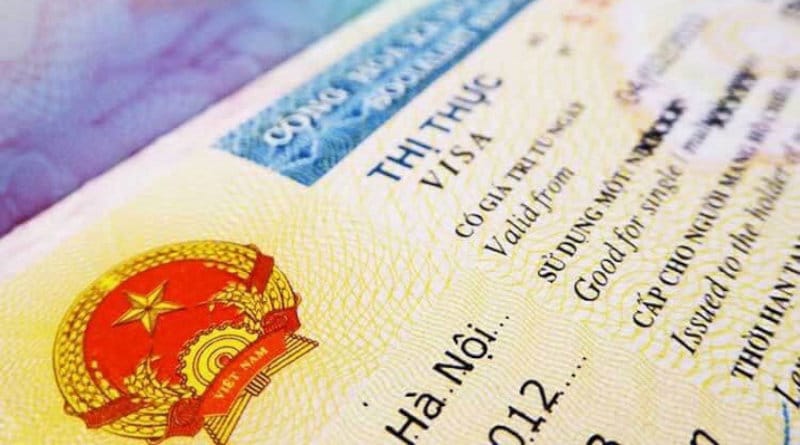
A set of documents for business partners from overseas including:
- A business license that includes any of the following: Business registration, investment license, representative office, etc.
- Seals certificate of the organization or party
- A letter of introduction that has either the signature or the seals of an authorized person of your partner in Vietnam
Note: Any foreign individual entering Vietnam must have all the documents ready so that the Immigration Department can assess for entry. After their acceptance, you will receive an Approval Letter On Arrival and head to the business visa registration procedure.
3️⃣ Steps to apply for the business visa in Vietnam
- Step 1: The business in Vietnam and its foreign partner discuss the entry procedure with each other
- Step 2: The business in Vietnam begins the invitation procedure and entry guarantee for its foreign business partner with the following steps:
- Update the entry information with the Immigration Department
- Send an entry application to the Immigration Department
- Step 3: Wait for approval from the Immigration Department. In case of acceptance, the Immigration Department will send an entry letter to the organization. However, if the application is denied, the organization in Vietnam will receive a letter with a full explanation from the Immigrant Department.
- Step 4: The organization in Vietnam will then inform you of the entry status and send you an entry letter, along with clarifying all the information needed to apply for the business visa at either Vietnam airport or the diplomatic missions.
4️⃣ How long does it take to apply for a Business Visa?
It takes 5 – 7 days to fully prepare all the business visa registration documents (Which does not include Saturday and Sunday because the working days are from Monday to Friday). Such also depends on the nationality of the applicant and the time of visa registration.
5️⃣ Where do you apply for a business visa?
The business you work with in Vietnam will submit all the documents to the Immigration Department or Immigration Department of the People’s Public Security where the business is headquartered.
6️⃣ Business visa registration fee
The fees can vary depending on whether you want to choose a single-entry visa (you cannot exit and enter the country with the same visa) or a multiple-entry visa (you can exit and enter the country with the same visa). The length could also be different, although it is now impossible to obtain a business visa for a period longer than 3 months.
| Category | Type | Fee |
| 1 | One-time valid visa | 25 USD |
| 2 | Multiple-time valid visa | |
| a | 3-month validity | 50 USD |
| b | 3-to-6-month validity | 95 USD |
| c | 6-month-to-12-month validity | 135 USD |
| d | 1-year-to-2-year validity | 145 USD |
| e | 2-year-to-5-year validity | 155 USD |
| f | Visa provided for people who are under 14 | 25 USD |
What you should avoid when applying for a visa in Vietnam
It was common to use an agency to help you get a business visa. However, after an event on the 1st of June 2021, the Vietnamese government began to restrict the use of visa agencies, which forced hundreds of foreigners to go back to their country.

The incident happened with an Australian couple. The husband’s visa was about to expire, and he had to leave the country voluntarily. He worked as an Assistant Manager at a hotel in Da Nang. However, the company he worked for did not provide him with a work permit. So he went the other way: He used a visa agency that created a shell company to cover that up, and unfortunately, everything was exposed. The law became more strict on the foreigners’ side at that time, forcing hundreds of foreigners that entered Vietnam through the same way to be deported back to their home country.
Many foreigners were not aware that what they did was against the law. Many long-term expats who had lived in Vietnam for 5, 6 years also had to leave the country.
A new decree was approved on the 15th of February 2021, which toughened up the qualification for foreigners to seek out a job in Vietnam.
Marco Foerster – The manager of the international business advisory unit of Dezan Shira & Associates in HCM city, stated that Vietnam had started to make it harder for expats to find a job in Vietnam. Such a change had forced many foreigners to leave the country due to their incapability to complete necessary documents or lack of work permits.
Another similar case is the scam conducted by illegal tourist agencies. They will only sell you an invitation letter without selling you the tour. This with the event mentioned above were the reasons that led to the visa crackdown in June 2021.
A reminder to those who are going to travel to Vietnam, or any other countries in Southeast Asia: You must own the right visa for the right purpose. Vietnam, and other countries in the region such as Thailand and Cambodia, are constantly updating their new policy to fight against illegal entries and illegal stay. For example, it was common to see people with a business visa stay in Vietnam for a very long time because they continued to extend their visa when it expired. However, things don’t work that way. As being said by the law: Only foreigners with a permanent resident card are allowed to stay in Vietnam long-term which includes the items below:
- Foreigners who are legal residents
- Foreigners who have stayed in Vietnam for 3 years or longer
- Foreigners who can ensure a stable income to take care of themself in Vietnam
- Foreigners who are sponsored by their family, spouse, or children who are permanently residing in Vietnam
It’s important that you strictly follow the requirements to avoid unwanted consequences.
Other types of visa in Vietnam
Here are some other less popular types of visas that you can get if you meet the requirements:
| Visa type | Description | Validity |
|---|---|---|
| L1 – L2 | Issued to the foreigners who come to Vietnam to work with Vietnam authorities/parties | 12 months maximum |
| NG1 – NG2 | Issued to the members of the diplomatic missions | 12 months maximum |
| DN1 – DN2 | Issued to the foreigners who work with businesses in Vietnam | 12 months maximum |
| DT1 – DT2 | Issued to the foreigners who invest in Vietnam | 5 years maximum |
| LS | Issued to the foreign lawyers that work in Vietnam | 5 years maximum |
| NN1 – NN2 | Issued to the people who are the head of the representative office, branches, projects of foreign organizations or individuals in Vietnam | 12 months maximum |
| NN3 | Issued to the foreigners who work with foreign non-governmental organizations, foreign representative offices, branches of foreign organizations,… in Vietnam | 12 months maximum |
| HN | Issued to the foreigners who come to Vietnam for conferences | 3 months maximum |
| DH | Issued to the foreigners who come to Vietnam to study | 12 months maximum |
| PV1 | Issued to foreign journalists and news in Vietnam | 12 months maximum |
| PV2 | Issued to foreign journalists and foriegn news that work short-term in Vietnam | 12 months maximum |
| DL | Issued to the foreigners who come to Vietnam for tourism | 3 months maximum |
| LD1 – LD2 | Issued to the foreigners who come to VIetnam to work | 2 years maximum |
| TT | Issued to the foreigners who are either husband or wife of a Vietnamese, legal child that is under 18 of the foreigner who is granted LV1, LV2, DT, NN1, NN2, DH, PV1, LD or family member of a Vietnamese | 12 months maximum |
| VR | Issued to the foreigners who come to Vietnam to visit family or for other purposes | 6 months maximum |

